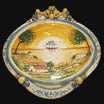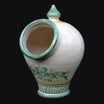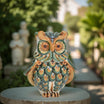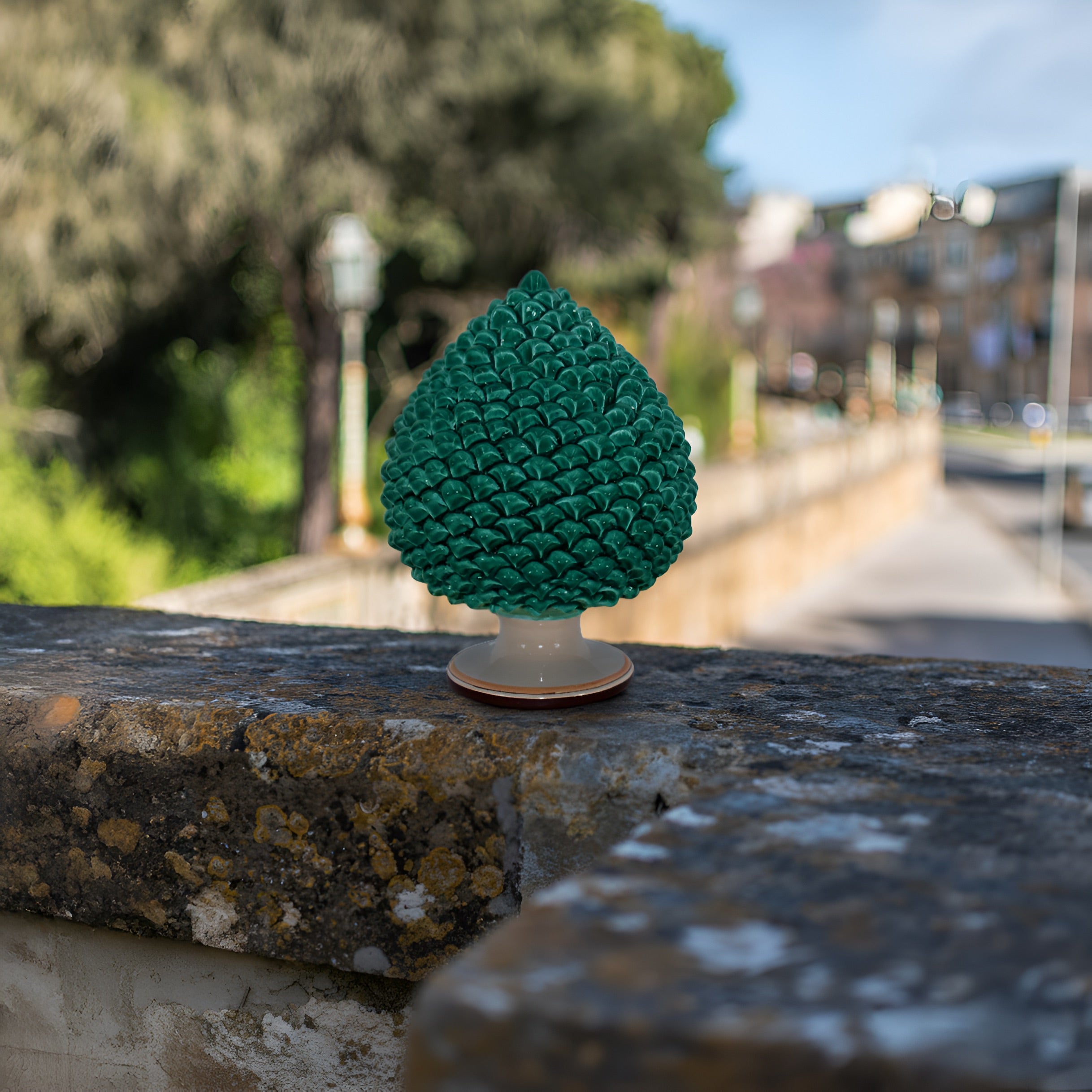Caltagirone is a gem located in the Sicilian hinterland, internationally renowned for its thousand-year-old ceramic tradition and its historic architecture that fascinates visitors from all over the world. Known as the “capital of ceramics”, Caltagirone embodies centuries of history, art and culture, which are reflected in its urban landscapes, artisanal traditions and religious celebrations.
In this article we will explore the monuments, traditional festivals and unmissable places of Caltagirone, with a special look at the famous Scalinata di Santa Maria del Monte and the festivities of San Giacomo, celebrations that transform the city into a spectacle of lights and popular devotion.
The History of Caltagirone
Ancient origins and cultural influences
Caltagirone has an ancient history that dates back over a thousand years, with roots that go back to the Greco-Roman era and subsequent Arab, Norman and Baroque influences. These different cultures have left traces in the monuments, churches and, above all, in the art of ceramics, which became a symbol of the city's identity. The city stands on hills that offer suggestive views, and its strategic position helped make it a center of commercial and cultural exchanges.

The art of ceramics: a thousand-year-old tradition
Caltagirone ceramics are famous all over the world for their unique shapes and bright colors that decorate plates, vases, tiles and sculptures. The tradition of ceramics was born in the Arab era and has consolidated over the centuries thanks to the mastery of local artisans, who have handed down unique techniques and decorative motifs typical of Sicilian culture for generations. Even today, visiting Caltagirone means immersing yourself in a world of artisan workshops, where every piece of ceramic tells an ancient story.
Evolution over the centuries
Over the centuries, Caltagirone has developed, adapting to new needs and cultural influences. After the Norman and Spanish domination, the city became an important center for Baroque art and architecture. The Staircase of Santa Maria del Monte, built in 1606, is the perfect example of how the city has continued to evolve, transforming historical influences into an artistic representation that today is the very symbol of Caltagirone.
Why is Caltagirone Famous?
The artistic ceramics of Caltagirone
Caltagirone ceramics are an art form rooted in the cultural fabric of the city and Sicily. From traditional “Moor’s Heads” to decorative tiles, each piece made by local artisans embodies a long artistic tradition. The production of ceramics is distinguished by the use of geometric, floral and symbolic motifs, inspired by historical periods, from the Arab period to the Baroque. Today, many visitors come to Caltagirone to purchase unique pieces and to attend artisan workshops that show the entire manufacturing process.

The Staircase of Santa Maria del Monte
The famous Staircase of Santa Maria del Monte is one of the most important symbols of Caltagirone. Built in 1606 and designed by the architect of the Kingdom Giuseppe Giacalone, it was initially conceived as a steep road, but later became a series of steps interrupted by small squares. In the 19th century, it was transformed into a single ramp with 142 steps, and, in the 1950s, each riser was decorated with majolica tiles depicting typical Sicilian ceramic themes, making it an open-air work of art.
During the July festivities for San Giacomo and the August festivities for Maria SS. del Monte, the Scalinata is transformed into a light show with the traditional luminaria, where thousands of lumiere illuminate the steps, creating a luminous design visible from all over the city. It is a moment of rare beauty that attracts visitors from all over the world.
Ceramic fairs and festivals
Every year, Caltagirone hosts a series of events dedicated to ceramics and local crafts. The Ceramics Festival is an opportunity for visitors to explore the artisan market, participate in ceramic workshops, and admire art exhibitions. The fairs allow visitors to appreciate the creativity of local artisans, who exhibit both traditional products and contemporary works. These events strengthen the city's connection with its cultural heritage and allow tourists to immerse themselves in Caltagirone's traditions.
Exploring Historical Monuments

The Senatorial Palace and the Captain's Court
The Palazzo Senatorio is a symbol of the historical and political importance of Caltagirone. Located in the center of the city, it is one of the most significant buildings from an architectural and cultural point of view. Built in the 17th century, this palace housed the Civic Senate, the center of public life and decision-making. Next to the palace is the Corte Capitaniale, built in 1601 by the famous sculptors of the Gagini family. This complex, an extraordinary example of civil architecture of the time, reflects the influence of the classical and baroque style typical of the Kingdom of Sicily.
The Church of St. Francis of Assisi
The Church of San Francesco d'Assisi is one of the most important historical churches in Caltagirone. Built in the medieval era and modified during the Baroque period, the church is known for its imposing façade and its interiors full of works of art. Among these, the "Deposizione" by Filippo Paladini stands out, a masterpiece that attracts visitors and art lovers. The Church of San Francesco d'Assisi is a place of profound spirituality and represents an important piece of the religious and artistic heritage of the city.

The Villa Comunale and the Teatrino
Designed by the architect Basile in the 19th century, the Villa Comunale of Caltagirone is a charming urban park in English style, perfect for relaxing walks and admiring examples of decorative architecture. The villa is adorned with a balustrade with decorated vases, Moor's heads and majolica pine cones, elements that embody the city's ceramic tradition. Inside the Villa, the Teatrino offers a spectacular lookout point from which you can enjoy a unique view of the city, and is decorated with majolica and arabesques that make it an architectural jewel.
Photo by Rino Porrovecchio from Palermo, Italy. Source Wiki
Main Attractions of Caltagirone
The Museum of Ceramics

The Caltagirone Ceramics Museum is an unmissable stop for those who want to discover the history and evolution of Sicilian ceramic art. Located inside the Villa Comunale, the museum houses a collection that ranges from prehistory to the beginning of the twentieth century, showing the evolution of techniques and decorative motifs. Each room tells a phase in the history of ceramics, with ancient finds and masterpieces by local artisans. This museum is a precious testimony to the artistic tradition that has made Caltagirone famous throughout the world. Here we talk about the birth of Caltagirone ceramics and some pieces exhibited inside the Caltagirone ceramics museum.
The Church of Santa Maria del Monte
The Church of Santa Maria del Monte is one of the oldest and most important churches in Caltagirone. Located at the top of the famous Staircase, this church represents a religious and historical reference point for the community. The building houses the 13th-century painting depicting the Madonna di Conadomini, one of the most venerated works of art in the city. With its austere architectural style and its interiors rich in history, the Church of Santa Maria del Monte is a place of meditation and devotion for the people of Caltagirone.
Piazza Umberto I and the Cathedral of San Giuliano
Piazza Umberto I is the heart of Caltagirone, surrounded by historic buildings and embellished by the Duomo di San Giuliano. Originally built in the 12th century and later renovated in Baroque style, the Duomo is one of the most important places of worship in the city. The Baroque façade, completed in the early 1900s, is a perfect example of Sicilian religious architecture. Inside you can admire works of art and decorations that testify to the faith and history of the people of Caltagirone.
The Staircase of Santa Maria del Monte: Symbol of Caltagirone
History and structure of the Staircase
The Staircase of Santa Maria del Monte, built in 1606 and designed by the architect of the Kingdom Giuseppe Giacalone, represents the "backbone" of the city, as reported by ancient local historians. Initially conceived as a steep road, it was later transformed into a series of steps with intermediate squares. In the nineteenth century, the stairway became a single flight of 142 steps, making it a continuous path towards the top of the city. In the twentieth century, each riser was decorated with polychrome majolica tiles, which depict ceramic motifs typical of Sicily, from the Arab era to the nineteenth century.

The illumination of the Staircase to San Giacomo
Every year, on July 24 and 25, the Scalinata is transformed into a unique light show to celebrate San Giacomo, the Patron Saint of Caltagirone. During the luminaria, thousands of hand-decorated and colored tiles are placed along the steps, creating a suggestive design illuminated by oil-fired “lumére”. This event, which began in the 17th century, has its roots in ancient popular traditions and offers visitors a breathtaking view of the city, illuminated by the flickering reflections of the lights, in a crescendo of magic and devotion.
The luminaria festival on August 14th and 15th for Maria SS. del Monte
In addition to the feast of San Giacomo, the Scalinata is also dressed in lights on August 14 and 15 for the solemnity of Maria SS. del Monte. The oil lamps create a new design each year, inspired by religious and cultural themes, offering an experience of beauty and spirituality. The festival attracts residents and tourists, who gather to admire the charm of the illuminated staircase. This summer event further enriches the calendar of celebrations in Caltagirone, making it one of the most exciting cultural destinations in Sicily.
The Meaning of the Feast of St. James
Historical origins and religious celebrations
San Giacomo Apostolo has been the Patron Saint of Caltagirone since 1109, when the Norman Count Roger declared San Giacomo protector of the city, as a sign of devotion for his support in battles. The patronal feast, which is celebrated every year on July 24 and 25, is an event that mixes devotion, history and spectacle, attracting believers and tourists from all over Sicily and beyond. The celebrations begin with religious rites in the main churches and end with a large procession that passes through the city.
Procession and popular devotion
One of the most heartfelt moments of the feast of San Giacomo is the night procession, which takes place on the evening of July 24 and continues until the first light of the 25th. The statue of the apostle, created by the goldsmith and sculptor from Catania Vincenzo Archifel in 1518, is carried in procession through the streets of Caltagirone on an imposing fercolo, preceded by the silver chest containing a relic of San Giacomo. This ancient ritual symbolizes the protection of the saint over the city, and the fercolo, accompanied by the songs of the faithful, travels a historic route that represents an act of faith and popular devotion.
Civic Senate Procession and Celebrations of July 24-25
On July 24 and 25, the celebrations reach their climax with the Corteo del Senato Civico, a historical parade in which the city authorities wear seventeenth-century clothes to testify to the prestige of the ancient “Universitas” of Caltagirone. The procession accompanies the civil and religious authorities to official ceremonies and passes through the main streets of the city, offering a unique spectacle. The procession is followed by the illumination of the Scalinata di Santa Maria del Monte, which is illuminated by thousands of tiles and oil lights, creating a fascinating design of lights that pays homage to the saint and enchants those present.
Traditional Events and Festivities in Caltagirone

Easter and religious celebrations
Easter is one of the most heartfelt holidays in Caltagirone, celebrated with a series of rites and processions that represent the Passion of Christ. Among the traditions, the Good Friday procession stands out, in which the local brotherhoods, dressed in traditional clothes, accompany sacred statues and religious images through the streets of the city. Holy Week is a period of meditation and devotion for the community, involving not only residents, but also visitors attracted by the solemnity of the Easter rites.
Feast of St. Peter and its historical significance
On June 29, Caltagirone celebrates San Pietro, a holiday that dates back to ancient times. This festival is characterized by religious events, processions and moments of sharing among citizens. The statue of San Pietro is carried in procession through the main streets of the city, accompanied by the faithful and folk groups. The feast of San Pietro is an opportunity to keep alive a tradition that unites the city and celebrates the sense of belonging and cultural identity.
Christmas and the living nativity scene of Caltagirone
During the Christmas period, Caltagirone is transformed into an atmosphere of magic and tradition. In addition to the Christmas markets and the lights that decorate the city, the living nativity scene is famous, which is represented in the historic districts. This event attracts numerous visitors, who can watch Nativity scenes reproduced with traditional costumes and realistic settings. The living nativity scene represents one of the most fascinating Christmas traditions of the city, combining history, art and spirituality.
Visit Itineraries: What Not to Miss
Ceramics Tour and Craft Workshops
Visiting Caltagirone means immersing yourself in the tradition of ceramics through a tour of its artisan workshops. Several workshops in the city offer live demonstrations of ceramic processing and decoration techniques, giving visitors the chance to create small personalized objects. These guided tours allow you to observe the mastery of the artisans up close and to purchase unique pieces, perfect as a souvenir of a trip to the city of ceramics. To book your organized tour contact us for more information.
Walks in the historic districts
Caltagirone boasts a charming historic center, with narrow streets, scenic squares and ancient churches that tell centuries of history. Among the most interesting neighborhoods are those of San Giorgio and San Giacomo, where important religious and civil buildings are located. A walk through these streets offers a journey into the past and allows you to admire architectural details typical of Sicilian art, such as wrought iron balconies and ceramic decorations.
Local Culinary Experiences
For those who love good food, Caltagirone offers numerous opportunities to discover Sicilian gastronomy. From traditional trattorias to artisanal pastry shops, the city offers typical dishes such as pasta alla Norma, arancino and cassata siciliana. In addition, during holidays and festivals, it is possible to taste sweets and specialties prepared exclusively for these occasions. A culinary experience in Caltagirone is a journey into the flavors and traditions of Sicilian cuisine.
The Sicilian Puppet Theatre and the Puppet Tradition
History of the Puppet Theater in Caltagirone
Sicilian puppet theatre is a popular art form that has deep roots in the culture of Caltagirone and Sicily. This type of show, with finely sculpted and animated puppets, tells stories of knights, ladies and epic battles, inspired by the stories of the paladins of France and the Chanson de Roland. In Caltagirone, the puppet theatre keeps this tradition alive, with performances that continue to fascinate young and old.
Gesualdo Pepe Collection and the Puppet Museum

The Museo dei Pupi in Caltagirone is dedicated to the collection of Sicilian puppets that belonged to Gesualdo Pepe, a master puppeteer who helped preserve this art form. The museum houses not only marionettes, but also historical posters and ancient books, offering a complete immersion in the culture of Sicilian puppets. Visitors can learn about the details of the performances and see the hand-sculpted puppets up close, each of which is a unique work of art.
Source and Image: edizioniincontri.it
The culture of Sicilian folk tales
The puppet theatre is not only entertainment, but also a means of passing on popular stories and values. Each performance reflects aspects of Sicilian culture, from the sense of honor to religious devotion. The stories told, often heroic or of sacrifice, teach life lessons and keep alive the cultural roots of Caltagirone. The puppet theatre is an important piece of Sicilian cultural heritage and an unmissable attraction for those visiting the city.
Travel Tips for Visiting Caltagirone
How to get to Caltagirone
Caltagirone is easily accessible from several Sicilian cities. By car, the city is about an hour from Catania, along the A19 motorway and the SS124 state road. For those arriving by train, there are direct connections to Catania and Gela. Regional buses are another convenient option for those who prefer public transport. Once you arrive, the historic center is easily explored on foot, allowing you to fully enjoy the beauty of the city.
Where to stay for an authentic experience
Caltagirone offers a wide choice of accommodations, from characteristic bed & breakfasts located in the historic center to hotels that combine modern comforts and historic settings. For an authentic experience, we recommend staying in one of the surrounding holiday homes or farmhouses, which allow you to enjoy the tranquility of the Sicilian countryside. Many accommodations also offer tastings of typical local products, enriching the visitor experience.
Best times to visit
The ideal time to visit Caltagirone is in spring or summer, when the climate is mild and you can participate in the celebrations of Easter, San Giacomo and Maria SS. del Monte. During the months of July and August, the city comes alive with events and shows, including the luminare della Scalinata. The Christmas period is also evocative, thanks to the living nativity scene and the decorations that envelop the city in a magical atmosphere. Each season in Caltagirone has its own unique charm.
Curiosities and Legends of Caltagirone
The Legend of the Madonna of Conadomini
One of the oldest legends of Caltagirone is that of the Madonna di Conadomini, venerated in the Church of Santa Maria del Monte. According to tradition, the painting depicting the Madonna dates back to the 13th century and miraculously survived various historical events. Legend has it that the Madonna protected citizens from calamities and dangers, thus becoming a symbol of faith and hope for the community. Even today, the Madonna di Conadomini is an important religious icon for the inhabitants of Caltagirone.
Mysteries Behind Ceramic Moorish Heads
The famous ceramic "Moor's Heads", present in many balconies and courtyards of Caltagirone, are linked to a legend of love and revenge. It is said that, during the Arab domination in Sicily, a young Sicilian woman fell in love with a Moor. However, when she discovered that the man intended to leave her to return to his homeland, the young woman, gripped by jealousy, killed him and transformed his head into a vase for flowers. This popular story gives a special meaning to these sculptures, which are today a symbol of local craftsmanship.
Stories of artisans and ancient workshops
The art of ceramics in Caltagirone is accompanied by stories and anecdotes of artisans who have helped pass on the centuries-old techniques. Each workshop has its own history, and some have been active for generations. Local artisans are known for their mastery and the passion with which they create each piece. Visitors can explore these workshops and discover the secrets of the workmanship, immersing themselves in a world of tradition and creativity.
The Role of Caltagirone in Sicilian Tourism
Importance of cultural tourism
Caltagirone is a highly attractive destination for cultural tourism, thanks to its artistic heritage and ceramic tradition that makes it unique in the world. The historical attractions, museums and religious festivals attract thousands of visitors every year, contributing significantly to the local economy. The city offers tourists an authentic experience, allowing them to fully understand Sicilian culture through its artistic and spiritual manifestations.
Impact of ceramics on the local economy
Ceramics are not only an art, but also an economic pillar for Caltagirone. The artisan workshops and ceramics workshops attract buyers from all over the world, generating a continuous flow of visitors and creating job opportunities for the local community. In addition, the artisans of Caltagirone are protagonists of international fairs and exhibitions, bringing the name of the city throughout the world and consolidating its reputation as the capital of ceramics.
Projects to preserve traditions
To ensure that the art of ceramics continues to thrive, conservation and cultural promotion projects have been launched. Caltagirone collaborates with local authorities and cultural organizations to preserve artisanal techniques and promote educational and training events for new generations. Support for these projects ensures that the city maintains its identity and continues to be a point of reference for cultural and artistic tourism in Sicily.
Conclusion: The Unique Essence of Caltagirone
Caltagirone is a city that enchants with its history, its traditions and the art that permeates every corner. From religious celebrations to the illumination of the Scalinata di Santa Maria del Monte, every event is an opportunity to rediscover the deep bond of the community with its roots. Ceramics, the symbol par excellence of the city, represents an art that tells centuries of cultural influences and artisanal skill.
Visiting Caltagirone means immersing yourself in a journey through time, where past and present merge into a unique experience. Visitors can explore the historic alleys, admire artistic masterpieces and taste the local cuisine, fully experiencing the essence of Sicily. Caltagirone remains an unmissable destination for those who want to get to know the authentic heart of the island, celebrating the art, history and beauty of a city that continues to enchant generation after generation.


































































Leave a comment
All comments are moderated before being published.
This site is protected by hCaptcha and the hCaptcha Privacy Policy and Terms of Service apply.